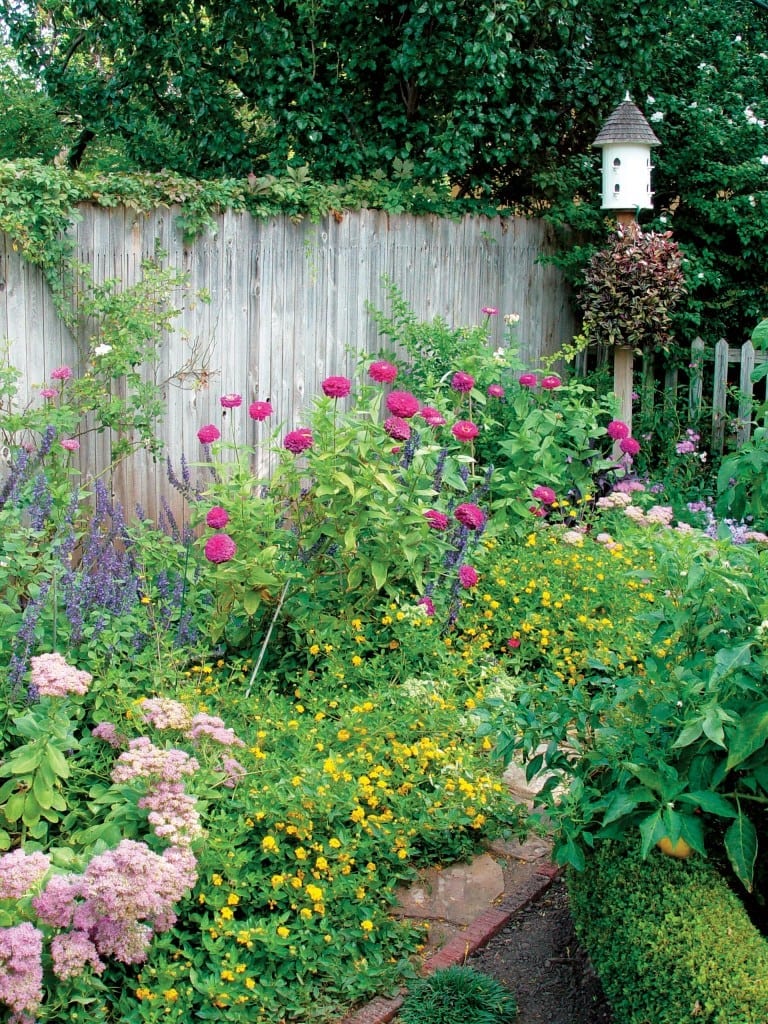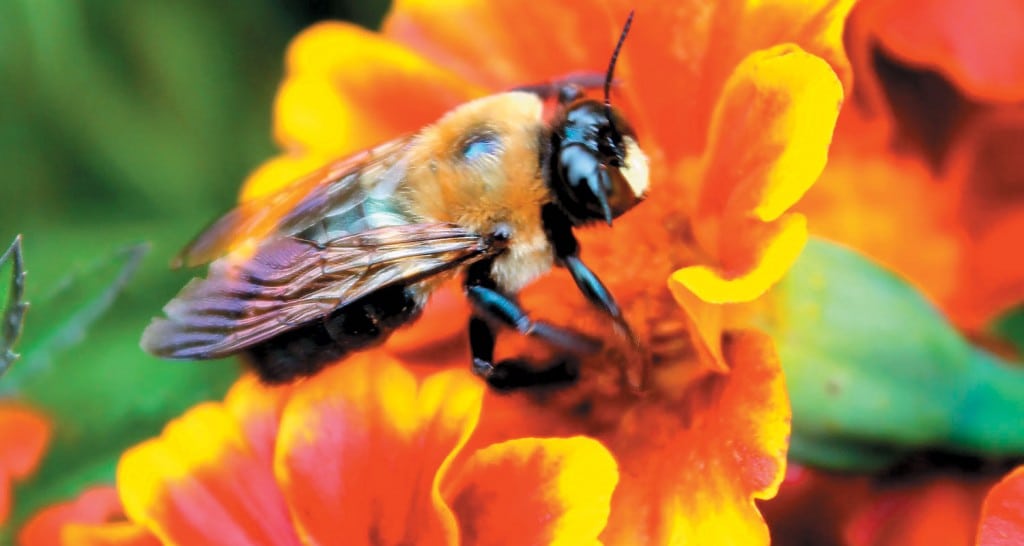Like them or not, bees and their flying-bug brethren are key to the survival of three-quarters of the world’s plants.
Their pollination efforts also are behind one of every three bites of food a typical American eats, accounting for some $15 billion a year in U.S. crop services, according to the U.S. Department of Agriculture.
But pollinator populations have been dwindling in recent years, enough so that a federal task force was appointed in 2015 to devise a “National Strategy to Promote the Health of Honeybees and Other Pollinators.”
Among the panel’s recommendations: Stem the loss of pollinator habitats, take a new look at pesticides (especially bee-toxic ones), rethink weed-management strategies on public land and encourage more pollinator-friendly plantings.
It’s that last one that’s set off a new wave of home “pollinator gardens.”
These are gardens designed to attract, feed and nurture pollinating wildlife — primarily bees but also butterflies, birds and a host of small insects that transfer pollen from one plant to another.
Researchers say that home gardeners can play an important role by picking up the slack from habitats being lost to asphalt and construction. Some are even calling the home landscape the new “refuge for pollinators.”
A linchpin of gardening for pollinators is planting more native plants — ones that native pollinators are most familiar with and best adapted to use.
Some pollinators are so selective that they use only one type of plant, and if that’s not available, they don’t reproduce.
The best known example is how monarch butterflies need milkweed. Their population has been declining in part because herbicides are regularly used to clear farmland and roadsides of that and other “weeds.”
Other pollinators are “generalists” and will eat a wider variety of plants, including many non-natives.
Researchers are working to come up with lists to help home gardeners identify some of the best plants for home pollinator gardens.
That’s been harder than it sounds because the choices vary so much from pollinator to pollinator but also because a pollinator’s need can change depending on life stage.
For now, the prevailing recommendation is to plant a wide diversity of plants, leaning toward native plants and especially toward landscapes that have one or more plants blooming at all times throughout the growing season.
The Xerxes Society, a butterfly-conservation group, recommends at least 15 to 20 different species of plants per yard.
Some of the native trees and shrubs that make most pollinator-garden lists are oak, black cherry, birch, crabapple, blueberry, red maple, pine, hickory, hawthorn, linden, beech, arrowwood viburnum, chokecherry, spicebush, serviceberry, New Jersey tea, buttonbush, summersweet and Virginia sweetspire.
In Tennessee, gardening expert George Kilgore says the best are iris, tea roses, coneflowers, daisies, day lilies, snapdragons, mint of any kind and the trees mentioned earlier.
Top U.S.-native perennial flowers include aster, goldenrod, sunflower, Joe Pye weed, violet, hardy geranium, black-eyed Susan, milkweed, penstemon, phlox, threadleaf coreopsis, bee balm, cardinal flower, mountain mint, purple coneflower, columbine, liatris, anise hyssop, sundrops, sneezeweed, Culver’s root, Indian pinks and Dutchman’s breeches.
Some pollinator-favorite, non-native plants include catmint, lavender, sedum, salvia, Russian sage, mints, lantana, daisy, alyssum, zinnia and butterfly bush (ideally ones with nonviable seeds to reduce unwanted spread).
Many pollinators are also happy with the same crops we like to eat (vegetables) as well as many of the ones we try to eliminate (weeds).

Vegetables and weeds that are high on the pollinator-attractiveness list include clover, dandelion, plantain, horsenettle, knotweed, dock, ragweed, corn, strawberries, Brussels sprouts, beans, lettuce and beets.
Just about everybody agrees that using fewer or no pesticides is another important way to aid pollinators. Many insecticides are broad-spectrum and kill bees or beneficial insects along with targeted pest insects. But even some of the newer pesticides that are poured into the soil instead of sprayed onto leaves can be taken up into a plant’s pollen, where the pesticides can harm pollinators.
Oils and soaps that work by directly hitting a pest bug are generally the least harmful to pollinators. Those sprays are best applied in the evening when pollinators are less active.
Here are four other pollinator-friendly steps home gardeners can take:
Eliminate invasive plants
Most of these are aggressive, non-native species that aren’t very attractive to pollinators to start with, but their biggest threat is elbowing out natives that are of high pollinator value.
Some of the worst invasives throughout much of the U.S. are tree of heaven, Oriental bittersweet, Japanese honeysuckle, kudzu, mile-a-minute weed and multiflora rose.
In Tennessee, Kilgore says the worst of the invasives are kudzu, wild violets and bamboo (never plant bamboo).
Plant in clusters
Diversity is important, but it’s also helpful to plant in “floral clumps” of at least five plants per clump instead of one of this and one of that.
Clusters are easier for pollinators to find and offer a bigger supply of pollen.
Don’t be too much of a “neatnik”
Tolerate cosmetic and temporary plant damage because some of that damage is from caterpillars — the larval stage of butterflies and moths.
Let leaves break down in landscape beds to serve as shelter for beneficial insect eggs as well as insulation for plants and a way to enrich soil.
Don’t deadhead all of the spent flowers immediately because birds use seeds as food, especially in winter.
And wait until spring to remove frost-killed grasses and perennials. That vegetation also shelters overwintering beneficial insects and serves as nest-building material for birds.
Give pollinators a water source
Birdbaths and water features are two good ways. Shallow puddles are also excellent if you refresh the water every few days to avoid mosquitoes.



